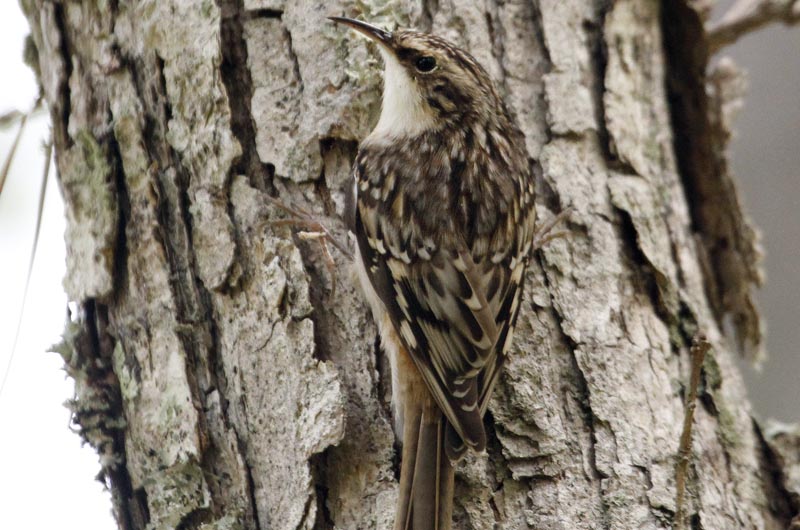This is the season to hear migrating songbirds at night as they pass overhead. Their short chips and notes are easy to overlook amidst the longer and louder call notes of the crickets and katydids, but they can be recognized if you know what you are listening for.
On the evening of Sept. 27 there was only a light breeze out of the north, and west of the Vineyard the weather front had already pushed through and the winds were out of the northwest..In bird speak, these are excellent conditions for migrating birds. So I went outside around 9:30 p.m. and clearly heard a number of call notes of migrants that, with training and practice, can be identified to species even though the birds can not be seen.
The Cornell Laboratory of Ornithology is studying these vocalizations. Most likely, these sounds help the birds to maintain in-flight associations, thereby organizing their spacing and avoiding collisions.
Did you know that most songbirds migrate at night? They do so for several reasons: they avoid the daytime hunting hawks that want to eat them (they can forage for food and rest during the daytime), and flying through the cooler and less turbulent night sky makes it easier to maintain steady body temperatures without losing too much water.
These migrants take off just after dusk and may fly for up to 10 hours, covering perhaps 300 miles in one night. They orient their migration flights with the setting sun, the moon, the stars, the land (avoiding large bodies of water) and even the Earth’s magnetic field. They use these cues to fly to a precise location on their wintering grounds, anywhere from southeastern U.S. to South America, and next spring they will return to the same place they nested last summer.
Listen for these nocturnal migrants on some night with a north or northwest wind; they are easier to hear than to see, as they can be seen only occasionally, if they fly in front of the moon.
Bird Sightings
Perhaps the most surprising arrival this week is that of a Lapland longspur, observed by Bob Shriber at Philbin Beach on Sept. 28. Seems really early for these visitors from the north, as most of them will not arrive until much later this fall. Five years ago we had another early longspur that was observed on Sept. 22, 2009, so late September is not unheard of.
On Sept. 13, Scott Stephens observed a northern waterthrush at the Phillips Preserve, and he reports that he has not heard any eastern wood-pewees since then. That is about when they stopped calling — I can not bring myself to call their vocalizations song — in my neighborhood as well.
David Stanwood observed an odd-looking eastern towhee near his house off Lambert’s Cove Road. It had a lot of white flecks on the wings and back, suggesting the western spotted towhee rather than our exceedingly common eastern towhee. Mary Makepeace asked about their presence recently as well. Spotted towhees have not been observed on the Vineyard, but Matt Pelikan reports that they occasionally appear in the east; we need to check our towhees more carefully, especially at this time of the year when western strays are more likely.
As September turns into October, there is still plenty of action on the hummingbird front. Penny Uhlendorf and Scott Stephens observed a ruby-throated hummingbird on Sept. 20, 22 and 23 at their Pilot Hill Farm feeder. Cathy Minkiewicz observed a male and later a female or juvenile on Sept. 25. Rick Karney and Nelson Smith have also observed hummers on that day at their West Tisbury and Edgartown feeders. It is still too early to put those feeders away! Sue Stephens observed a common yellowthroat, ovenbird and black-throated blue warbler at Gay Head Moraine on Sept. 23.
On Sept. 24, Sally Hamilton found a dead but still beautiful female magnolia warbler under a bush off Turkeyland Cove in Edgartown. Also on that day, E. L. Edwards utilized the photo of a Philadelphia vireo in last week’s Gazette to identify a bird that had crashed into a window at her Harthaven home.
Also on Sept. 24, Jeff Bernier found a number of birds at Eel Pond and Little Beach, including more than 30 greater yellowlegs, a great blue heron, 12 black skimmers, 35 black-bellied plovers, five least sandpipers, one semipalmated sandpiper, and one red-tailed hawk. He notes that the skimmers were skimming and showing off their flying skills around the dock and boat launching ramp at the end of Pease’s Point Way. The skimmers were still present on my Saturday morning guided birding tour on Sept. 27, although they were perched on Little Beach rather than putting on an aerial show.
Lanny McDowell was walking on a woods trail at the Phillips Preserve on Sept. 24 and was wondering why he had not seen or heard a brown creeper in a long time. Then one flew up close to him and perched on a nearby tree trunk. Interesting coincidence?
On Sept. 27 a white-throated sparrow hit Soo Whiting’s kitchen window. Luckily it was just stunned and was able to revive and fly away.
Also on Sept. 27, my guided birding tour tracked down some migratory songbirds in the woodlands near Crackatuxet Cove, including solitary vireos, pine warblers, several blackpoll or bay-breasted warblers (they look very similar and were a ways away), both downy and hairy woodpeckers, eastern towhees and gray catbirds, all as a result of pishing to get better looks at the chickadees.
On Sept. 28, Elizabeth Page Rogers reports that three American oystercatchers were still present at Chilmark Pond, and that there were three groups of male common eiders off Squibnocket Beach.
There are lots of birds around, so please get out looking for them, and be sure to report your bird sightings to birds@mvgazette.com.
Robert Culbert leads guided birding tours and is an ecological consultant living in Vineyard Haven.





Comments (2)
Comments
Comment policy »